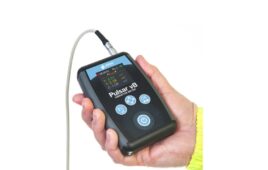Researchers at Northwestern University and Shirley Ryan AbilityLab in Chicago asked themselves that question. Their answer is a wearable wireless sensor similar to a Band-Aid strip. The device mounts to the throat and detects breathing and coughing and a set of algorithms provide the analysis. Similar to sensors designed to monitor speech and swallowing in recovering stroke patients, the COVID-19 sensing device monitors coughing intensity and patterns, chest wall movements (which indicate labored or irregular breathing), respiratory sounds, heart rate and body temperature, including fever.
Instead of a microphone, a high-bandwidth, tri-axis accelerometer measures movement of the surface of the skin. With the existing sensing techniques and data analysis, early detection of COVID-19 can be accomplished for earlier intervention and treatment. This could be extremely useful for those treating potential COVID-19 patients.
With the sensing device, hospitalized patients can be released and sent home for continuous monitoring. The real-time data provides greater insight into the patient’s health than other monitoring and analysis techniques and extends the capabilities of telemedicine.
To prove the device’s capabilities about 25 COVID-19 patients and the healthcare workers who treat them have been wearing a device for over two weeks in a clinical or home environment collecting more than 1,500 cumulative hours and more than one terabyte of data that is transmitted wirelessly to a HIPAA-protected cloud for analysis.
The current design does not measure blood oxygenation levels but since that is also an important diagnostic for lung health, the design team plans to include this capability in the next generation of devices.
Filed Under: Sensor Tips, Fighting COVID-19




